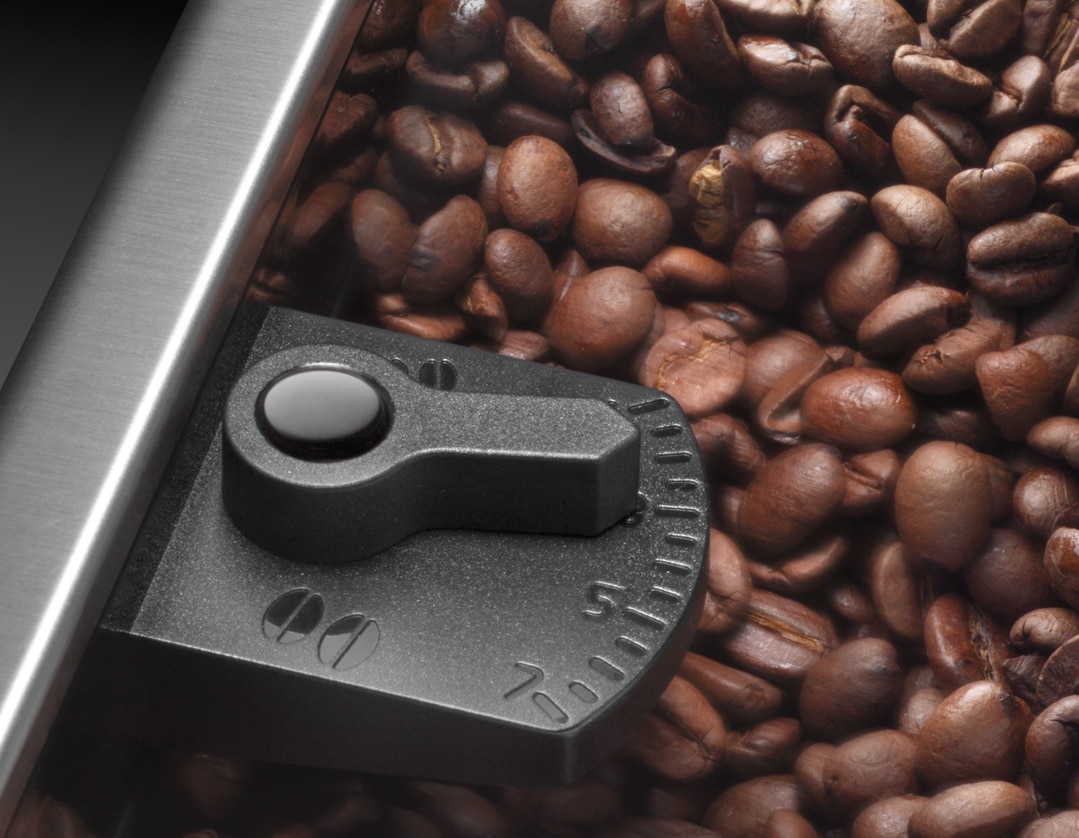
Trends & lifestyle
With the different types of coffee production available today, one of the many important factors is how the coffee is ground.
In a grinder, whether electric or manual, the process of grinding coffee uses two cutting blades, either one on top of the other or conical. One of these blades will have the ability to be adjusted either closer together or further apart from the other blade allowing the operator to select the coarseness relevant to the style of brew. As well as the words ‘Coarse’ and ‘Fine’, you will see images of small and large coffee beans. These often have numbers with them (the smaller the number, the finer the grind). You might also see the words ‘Grosso’ and ‘Fin’ with an arrow pointing in the direction the blades need to be adjusted.
The operator will want a coarse coffee grind for a cafetiere or French press, which will infuse in around 3 minutes.
Make a slight adjustment finer, and this will be perfect with a Chemex or V60 pour over as well as an AeroPress. One more adjustment finer, and this will be great for a syphon coffee.
We will need the coffee relatively fine for an espresso, and we can only tell if the grinder is set up correctly by extracting an espresso with a target time of around 25-30 seconds for a 30ml or 60ml shot. These are only guidelines, and if you use a roasted coffee a little darker, then the extraction will be a little quicker, as an example.
The joy of working with coffee is the volatility of the product. Coffee alters the longer it’s out of the bag; It releases the delicate gases and oils that the roaster has worked hard to develop, it warms up or cools down, absorbs moisture from the atmosphere or dries out. These tiny changes will often play havoc with your espresso, so don’t worry if today your coffee appears different from yesterday, adjust your grinder accordingly. A coarser grind speeds up the extraction just as a finer grind will slow down the extraction. For example, if you had a bucket of stones and pour a pint of water on it, the water will pass through it faster than a bucket of sand.
In the same way that an apple quickly goes brown when you have bitten into it, coffee alters when it interacts with oxygen, destroying those delicate oils and gases, which is called oxidation.
We believe that we taste in the mouth, but this is only partially correct. We pick up flavours in the mouth; Sweet, Acidic, Bitter, Salty, and of course, Umami. However, without the ability to smell, we can’t taste effectively. The delicate gases need to be picked up by our olfactory (senses in the nose which send signals to your brain to determine the smell), combined with the flavours, gives us the ability to taste.
The next time you are putting beans into your De’Longhi bean to cup machine, notice the dial in the compartment, note what number it is on, and run a double espresso for best results and time your extraction. If the time is quicker than 20 seconds, alter the dial anti-clockwise one notch and run off another coffee.
Many factors will influence your coffee; the origin of the beans, the blend, how long the coffee was roasted for, and how fresh they are. By enjoying the challenge of finding the correct coarseness, you will undoubtedly improve your coffee.




Testo vario
Join us
Policies
Support